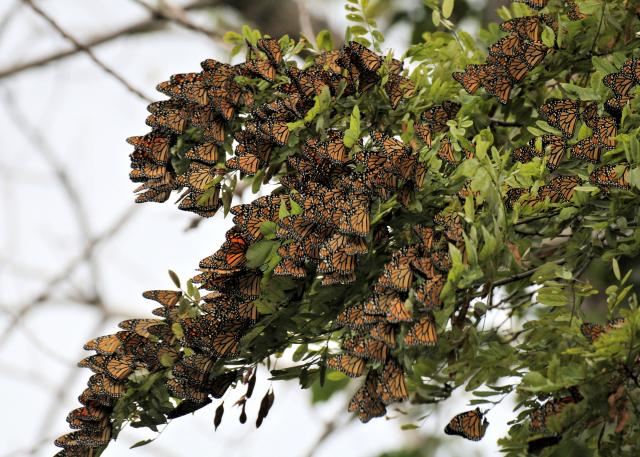The migration of monarch butterflies (Danaus plexippus) from Canada and the United States to overwintering sites in Mexico is one of the world's most amazing biological phenomena, although recent threats make it imperative that the resources needed by migrating monarchs be conserved.
The most important first step in preserving migration resources—determining the migration flyways—is also the most challenging because of the large-scale nature of the migration. Prior attempts to determine the flyways using mark-recapture techniques with wing tags gave some clues, but this important information has never been fully obtainable until now.
In 2005 the citizen-science program, Journey North, initiated a project that asked participants to record sightings of overnight roosts of monarchs during their fall migration, and this project now provides an ideal way to illustrate the flyways used by monarchs on their way to Mexico, with the assumption that roost locations indicate migration routes.
We used 3 years of this data to elucidate the flyways on a continent-wide scale, that revealed two distinct flyways, but only one appears to lead directly to Mexico.
This main, 'central' flyway begins in the American Midwest states and southern Ontario, then continues south-southwest through the states of Kansas, Missouri, Oklahoma and Arkansas, and finally passes through Texas and northern Mexico.
These data also highlighted a separate, smaller flyway along the eastern and coastal states, but there was a noticeable lack of roost sightings in this flyway at lower latitudes. Since there are few recoveries of marked monarchs in Mexico originating from coastal areas, we compared the timing of roost formation in this 'eastern' flyway with the main, central flyway. Roosts in the eastern flyway lagged behind the central roosts in timing, suggesting that monarchs traveling in this flyway have a reduced chance of making it to the Mexico wintering site.
Combined, our evidence indicates that locations in the central flyway should be considered priority areas for conserving migration resources.
|

Howard, E. and A.K. Davis. 2009. The fall migration flyways of monarch butterflies in eastern North America revealed by citizen scientists. Journal of Insect Conservation 13(3): 279-286. PDF |
|



